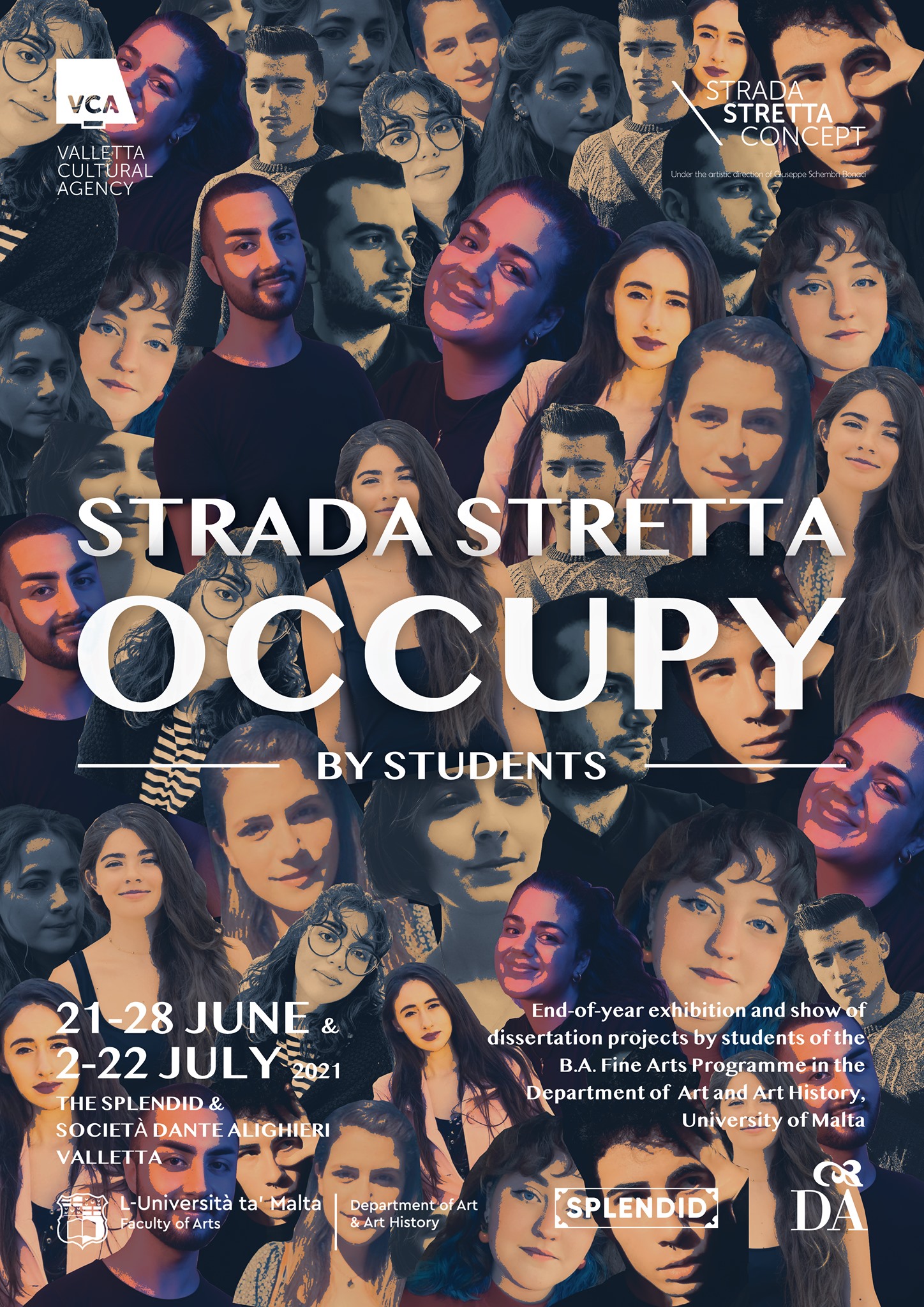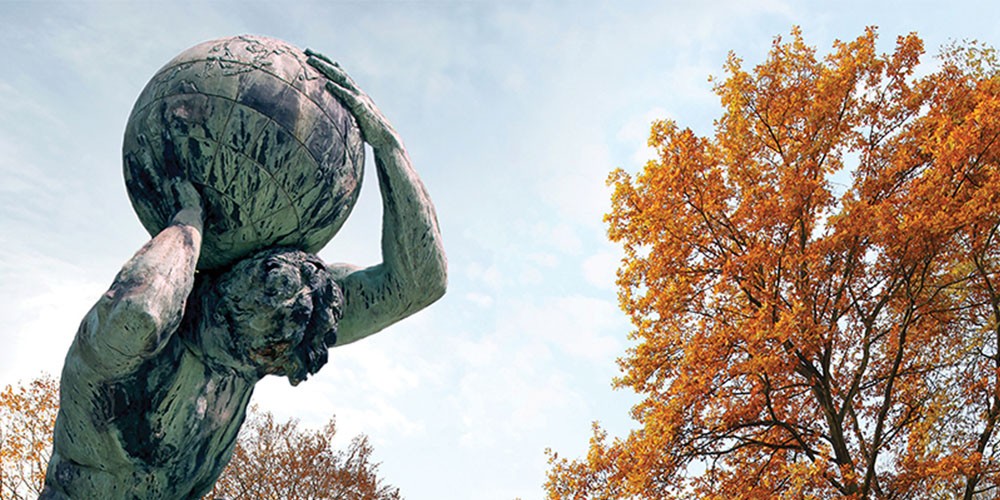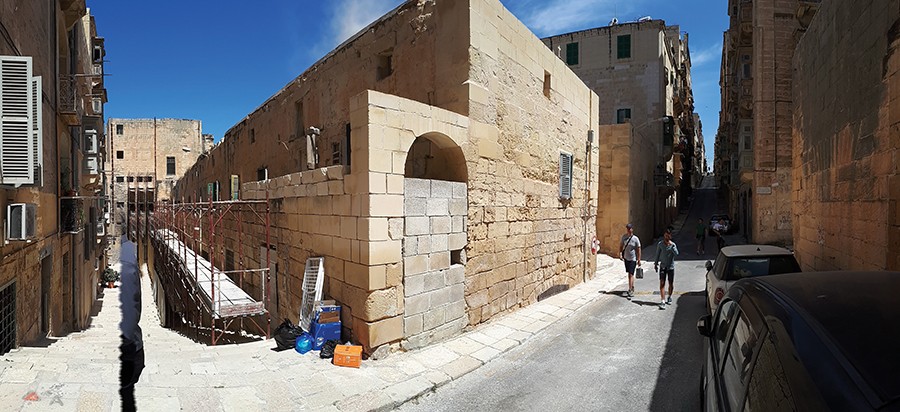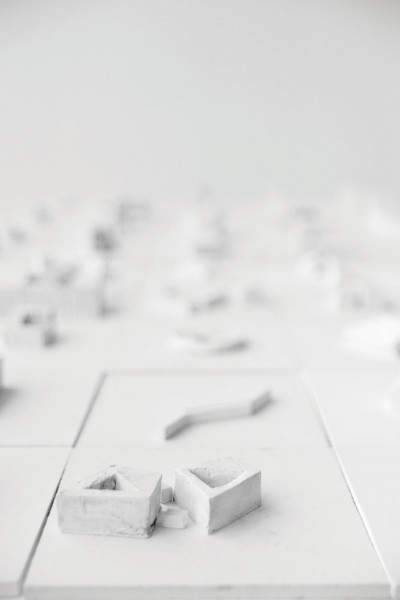The exhibition TNESSID emerges as a captivating fusion of creations crafted by five up-and-coming visionary artists who have embarked on a transformative journey through the Master of Fine Arts (MFA) in Digital Arts course at the University of Malta.
Continue readingImpressions on National Identity
Art invites us to explore the ideas and concepts that govern our daily life. We might take these ideas for granted, but good art startles us, encouraging us to re-examine these concepts. One group of Bachelor of Fine Arts (BFA) students examine our national identity through their art.
Continue readingSuch Stuff as Worlds are Made On
What would remain of our once-great civilization if humanity went extinct? Such Stuff as Worlds are Made On explores these themes at Spazju Kreattiv.
Continue readingThe Damned Sublime: Exploring right and wrong through art
700 years ago, Dante Alighieri explored the damned and the sublime in his La Divina Commedia. In 2021 B.A Fine Arts students at the University of Malta dive into this theme through their explorations of the whimsical, the grotesque, and the celestial, as well as the profound, the landscape, and the human form.
In an art exhibition named Damned Sublime, students following the Painting Workshop study unit with the Department of Art and Art History, Faculty of Arts, University of Malta, explore the themes Dante touched on in his Divine Comedy.
What is the Damned Sublime?
The scope is based on ‘oxymorons that interweave the damned with the sublime, understanding such juxtapositions as recalling early human encounters.’ Ever since the story of Adam and Eve, there has been the concept of ‘good’ and ‘bad’ deeds.
But what if there are no inherent wrongs and rights? What if the good is the bad, and the bad is the good? What if the damned is sublime and the sublime is damned?
Rather than ending up in eternal hell or heaven, people should pay the right price for committing a sin. Justice, according to Dante, is about restoring balance. In this sense, a murderer may have to experience being murdered over and over again in hell.
While looking into these themes, students realised that the damned and the sublime are not easily categorised. ‘There is cross-fertilisation between the two, depending on the personal point of view,’ participating students said.
Interpretations
The theme of this multimedia exhibition was interpreted in varying ways. Some students portrayed the damned, from which the sublime emerges. In contrast, others interpreted it as the sublime, which is tainted by the damned.
Students explored internal emotional struggles and childhood fantasies showing the whimsical and the grotesque. Others delved into the representation of Dante’s Inferno, Purgatorio, and Paradiso, the ever-changing landscape, or the exploration of love and lust.
There are students who created a dialogue with the local landscape and local newspaper articles, representing the developments and changes that the island and its citizens are constantly going through. Others portray the changes in the body, dealing with gender identity, or explore the idea of ruin.
There are other combinations of elements where one can see a mutual relationship, where without one, the other would fail to exist. As participating students said: ‘Life brings with it positive and negative things, and both can be the cause of either good or bad.’
Perhaps it is not so much the objective experiences and events that shape one’s life, but what those experiences become in the light that one sheds on it. What seems damned at the time might end up being sublime due to ever-changing circumstances. Likewise, things might be sublime for one yet damned for the other.
This exhibition, whilst engaging with the works of past masters such as Josef Kalleya, Giovanni Battista Gualli, and Salvador Dalí, explores the dualism between the damned and the sublime further as it encompasses various aspects of the theme: earthly life, spiritual life, fantasy, landscape, and identity.
Beyond oil medium
The main medium used is painting, but students moved beyond the medium by creating installations and incorporating different media. The media used embodies the meaning behind each artwork.
Though it is a multimedia exhibition, the oil medium is central to Damned Sublime, and it unifies all the exhibited works. Common between all artworks is the dismantling of forms in an attempt to create new concepts and ideas based on the students’ own artistic exploration.
Info
Damned Sublime is the title of the first part of the exhibition Strada Stretta Occupy by Students, which will be followed by a display of the dissertation projects by Fine Arts students.
The two-part exhibition series is part of the Dante 700th anniversary 2021 celebrations organized by the Department of Art and Art History, University of Malta, and the Strada Stretta Concept, as part of the Valletta Cultural Agency cultural programme. The project is in collaboration with the Società Dante Alighieri – Comitato di Malta. A special thanks to Jason Masini who provided The Splendid as a space for this exhibition.
Participating students for the ‘Damned Sublime’ exhibition are Kylie Aquilina, Andrea Luca Bartolo, Julia Schembri Bell, Martina Darmanin, Filippa Debono, Hayden Grima, Lisa Hirth, Sacha Scicluna, Matthew Shirfield, and Jeremy Spiteri.
The students have worked under the supervision of Prof Giuseppe Schembri Bonaci for several months, who is the Coordinator of the Fine Arts programme within the Department of Art and Art History, as well as the Artistic Director of the Strada Stretta Concept.
Damned Sublime was held from 21st to 28th June at The Splendid in Strait Street, Valletta.
The Second part of the exhibition will be held from 2nd to 22nd July at The Splendid in Strait Street, Valletta and Società Dante Alighieri in Old Bakery Street. Opening hours are: Monday till Thursday from 6pm till 9pm, Friday and Saturday from 7pm till 11pm and on Sunday the exhibition is closed.
The pandemic did not ‘undo’ our exhibition
As 35 University of Malta students prepared to showcase their dissertation projects in an exhibition at Junior College, restrictions to stop the spread of COVID-19 turned their plans upside down overnight. Yet the exhibition, titled Ctrl Z, is still taking place, having moved to where people are – online.
Continue readingThe time for contemporary art is now!
Many feel that our country is changing at an unprecedented rate. Some would even say that it has become unrecognisable. Valletta Contemporary’s Dr Joanna Delia writes about the growing appreciation for contemporary art in Malta.
Continue readingOpenness: The case of the Valletta Design Cluster
Valletta should be a unique experience, open to all. This is Valletta 2018’s key vision for the bustling capital. A group of people focused on making this a reality is the Valletta Design Cluster team. Located at the Old Abattoir site in Valletta, the initiative is going to create a community space for cultural and creative practice. Words by Caldon Mercieca.
According to Anna Wicher from the PDR International Centre for Design and Research, design is ‘an approach to problem-solving that can be applied across the private and public sectors to drive innovation in products, services, society and even policy-making by putting people first.’ This people-centred approach to design is not just a theoretical framework, but a concrete method that engages people in a co-creative process.
By bringing together people active in the cultural and social spheres, we want to have a concrete and meaningful impact on Malta’s diverse communities. We aim to provide support for students, start-ups, and creative enterprises and give social groups the necessary tools to empower those with different interests who nonetheless share the common purpose of using creativity for the social good. We also want to provide a new networking space for everyone. From students, to cultural and creative professionals, to residents, budding businesses and civil society groups, everyone will be welcomed at the Valletta Design Cluster.
This philosophy of openness and diversity is one that has permeated every aspect of the project from the very beginning. Over the past three years, we have consulted with residents, students, schools, higher education institutions, artists, makers, and creatives to build the vision for the space. A range of public and independent organisations are also contributing to the project, providing both expertise and generous support.
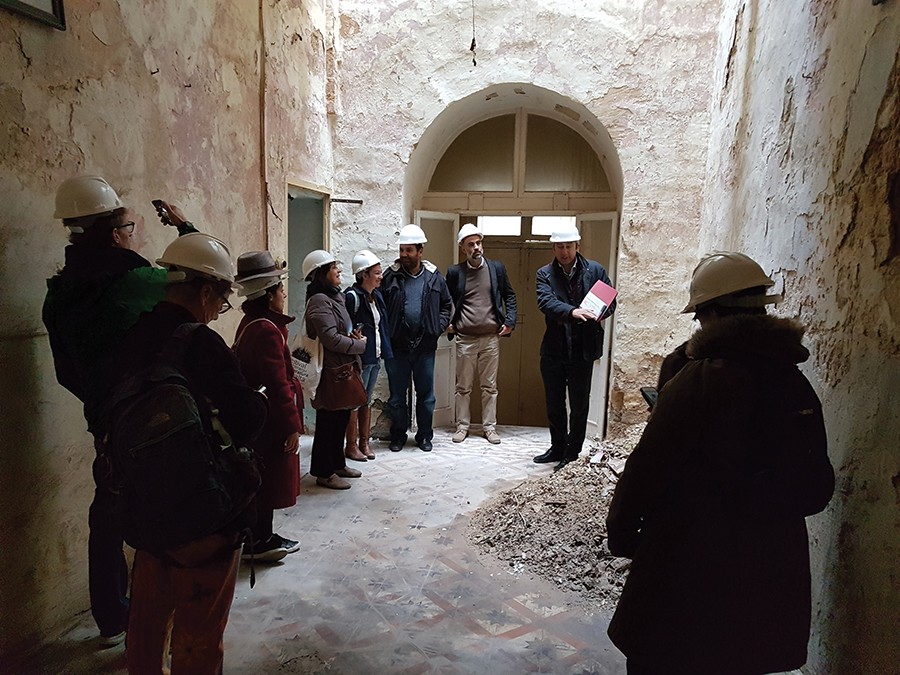
Thanks to the support from the European Regional Development Fund, the physical space for the Cluster as well as the urban public spaces around it are currently undergoing serious regeneration. Once finished, the Cluster will have a range of facilities, which were decided on following consultation with potential users. It will include a makerspace, coworking spaces, studios, a food-space, several meeting rooms and conference facilities, an exhibition space, and a public roof garden. All of these facilities have benefitted from input contributed by various potential users, by residents, and by organisations that have been interacting regularly with the team working on the Valletta Design Cluster.
We believe that a community can only truly reach its potential when it opens itself up to collaborations which share a common goal. This does not mean turning a blind eye to the challenges faced by the community on a daily basis, or to the ever-evolving scenario that surrounds it, but rather cultivating a readiness to learn, an aptitude to develop networks built on trust, and a capacity to address problems with a practical, positive, can-do attitude.
One valuable experience we are developing with our community stakeholders is Design4DCity. This annual initiative, which the Valletta Design Cluster team started back in 2016, sees creatives, residents, and local authorities joining forces to rework and improve a public space. We worked with the Valletta community in 2016, and continued with the Birżebbuġa community in 2017. In 2018 we plan to work again in Birżebbuġa as well as in Siġġiewi, and will involve children and young people in our public space projects. Such initiatives are providing very important insights into the application of collaborative, co-creative approaches involving multiple stakeholders.
But the work of the Valletta Design Cluster is not restricted to the restoration or transformation of space. For the past three years, we have collaborated with the Malta Robotics Olympiad, teaming up with artistic curators and student organisations from the University of Malta (UM) to design and construct the pavilion for Valletta 2018. By the end of the project, participants had constructed a fully-recyclable 300 square meter pavilion and presented it to the public. This year we also supported SACES, the architecture students’ association at the UM, through a number of design and construction workshops. Branching out, we have done work with a number of creatives from various backgrounds in projects involving video-capture, artifact-curation, narrative development linked to cultural identities, and flexible use of available space through appropriately constructed spatial modules.
Several workshops have also been held where project stakeholders were fully involved in training sessions, with the aim of building skills in user-centred design, applied to specific contexts. This meant interacting with students, researchers, creatives, residents, and organisations in developing what the Cluster can offer. One tool used in this process is the construction of a user persona, where the characteristics, interests and concerns of the user are gathered through interaction with potential users of a service. Students from a number of faculties have also provided their input in this process through dedicated workshops at the UM.
They also stressed that the Cluster needed to serve as a catalyst for networking and for strengthening entrepreneurial skills for people working in the creative sector.
All of this has become possible thanks to continuous collaboration and international networks which have contributed their resources to our projects. To assist us in this, the Valletta 2018 Foundation has joined Design4Innovation, an Interreg Europe project bringing together eight European countries all working towards using design to benefit society.
While we have been on the receiving end of a lot of support, translating our philosophy of openness into practice involved an element of risk. During a series of tours that we organised on site for potential users of the Cluster, we had to be open to various views and perspectives about what the Cluster could be. Participants highlighted issues related to accessibility and affordability as key concerns. They also stressed that the Cluster needed to serve as a catalyst for networking and for strengthening entrepreneurial skills for people working in the creative sector. In some cases, we had to revisit some of our plans and open new discussions with the architects to made adjustments. On other occasions, we called people in again to discuss their ideas further and see how we could integrate their suggestions into our vision.
Although we speak of cultural and creative industries, we should realise that the average number of people working in any single company is two. Indeed, 40% of designers in Malta are actually freelancers. The challenge for the Valletta Design Cluster here is to ensure flexibility and adaptability both in the physical infrastructure as well as the management of the Cluster. In this way, we can make the facility relevant for our users’ current needs, as well as cater to future ones.
The next stage in understanding our community of potential users better is to work together on the creation of a Design Action Plan. The Design Action Plan will highlight concrete actions to be undertaken by the Cluster during the first three years of its operation. It will serve as the main reference tool to structure the Valletta Design Cluster’s interaction with its community of users, practitioners, enterprises, and beneficiaries. Based on this open process, the Valletta Design Cluster aims at establishing itself as a new community-driven platform for cultural and creative practice in Malta.
Author: Caldon Mercieca
Sensory Apparatus
‘What does it really mean to sense something?’ That was the fundamental question Dr Libby Heaney (quantum physicist and artist) asked herself when she started working on Sensory Apparatus, currently on display at Blitz in Valletta. For almost a year she worked together with Bonamy Devas (artist and photographer) and Anna Ridler (designer working with information and data). For Libby sensing means the collection of data. Science tries to measure everything and is now through so-called ‘big data’ attempting to quantify subjective things, like happiness levels or the perfect online dating match.
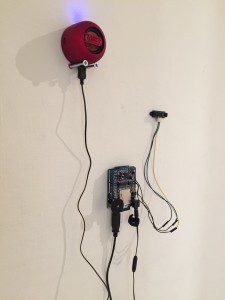 Sensory Apparatus visualises the constant surveillance our data is under. In the first room a web of elastic black and white fibres represents a network of light and data. The experience of traversing the space and interacting with the structure is like simultaneously being sensed and sensing the internet. ‘Like the internet, you are missing out if you cannot make it past the first room’, Libby suggests.
Sensory Apparatus visualises the constant surveillance our data is under. In the first room a web of elastic black and white fibres represents a network of light and data. The experience of traversing the space and interacting with the structure is like simultaneously being sensed and sensing the internet. ‘Like the internet, you are missing out if you cannot make it past the first room’, Libby suggests.
The second room has circuit boards and speakers mounted to the walls. People curious enough will trigger a proximity sensor and a computerised voice starts talking. ‘Name. Country. Age. Address.’ What sounds like nonsense at first, quickly develops into the auditive representation of an algorithm. Passing consecutive speakers continuously reveals its different layers. These algorithms are complex programmes, designed to collect the footprints people leave while online. The information is used by marketers to direct and personalise adverts. ‘We wanted to reveal the technology. The actual objects represent the discussion we are trying to make.’
The last room is pitch black. Only when approaching the middle of the room a projector lights up, projecting advertisements directly onto people’s bodies. The commercial pieces, gathered from across Malta, follow every movement, change constantly and are reflected from the room’s glossy walls. At the exhibition opening, once people noticed they were being used as a billboard, they quickly moved away. ‘People change and behave differently in there’, Libby says, making it obvious how advertisements influence us online.
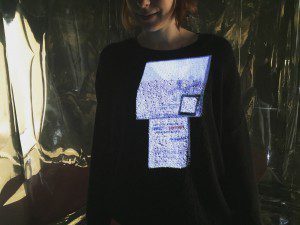 As a quantum physicist this change in behaviour reminded Libby of the Quantum Zeno effect, a phenomenon where an unstable particle will not decay while it is being observed. For Libby the concept of surveillance and the philosophy behind it led her to Sensory Apparatus. French philosopher Michel Foucault came up with the idea of panopticism, that inspired the exhibition. Panopticism is a social theory extending the panopticon, a prison designed to allow one person to observe all prisoners. Inmates would know they are possibly being observed, but could never be sure. This ultimately changes their behaviour. Sensory Apparatus’ first steps can be relived in the educational room near the artworks. The artists’ personal notes, inspiring articles, and other materials are laid out for everyone to explore.
As a quantum physicist this change in behaviour reminded Libby of the Quantum Zeno effect, a phenomenon where an unstable particle will not decay while it is being observed. For Libby the concept of surveillance and the philosophy behind it led her to Sensory Apparatus. French philosopher Michel Foucault came up with the idea of panopticism, that inspired the exhibition. Panopticism is a social theory extending the panopticon, a prison designed to allow one person to observe all prisoners. Inmates would know they are possibly being observed, but could never be sure. This ultimately changes their behaviour. Sensory Apparatus’ first steps can be relived in the educational room near the artworks. The artists’ personal notes, inspiring articles, and other materials are laid out for everyone to explore.
The free exhibition opens every Tuesday–Thursday from 10am–3pm and Friday–Saturday from 3–7pm at Blitz, 68 St Lucia Street, Valletta, until April 6. For more information see thisisblitz.com
Sensory Apparatus is supported by Arts Council Malta / Malta Arts Fund.
Creative playground
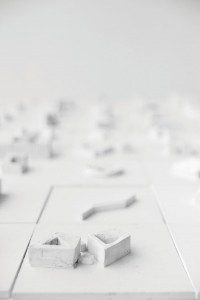
The Diploma in Design Foundations Exhibition highlights the yearlong visual and creative process of 80 students. It is a study in representation, composition, and perception of space. Pencil drawings, typographic prints, cast sculpture houses, and panoramic landscape photography fill the studio space.Continue reading




